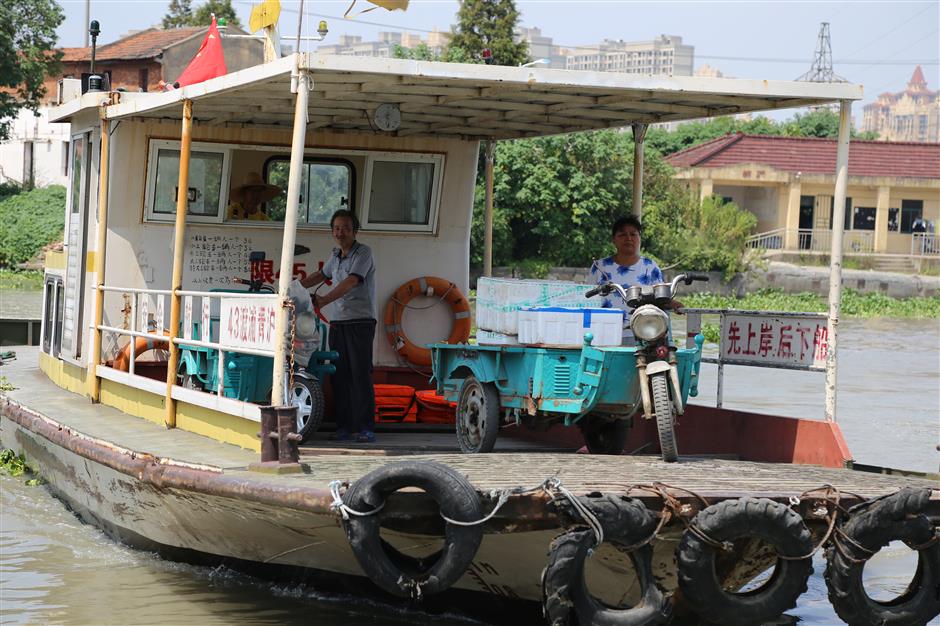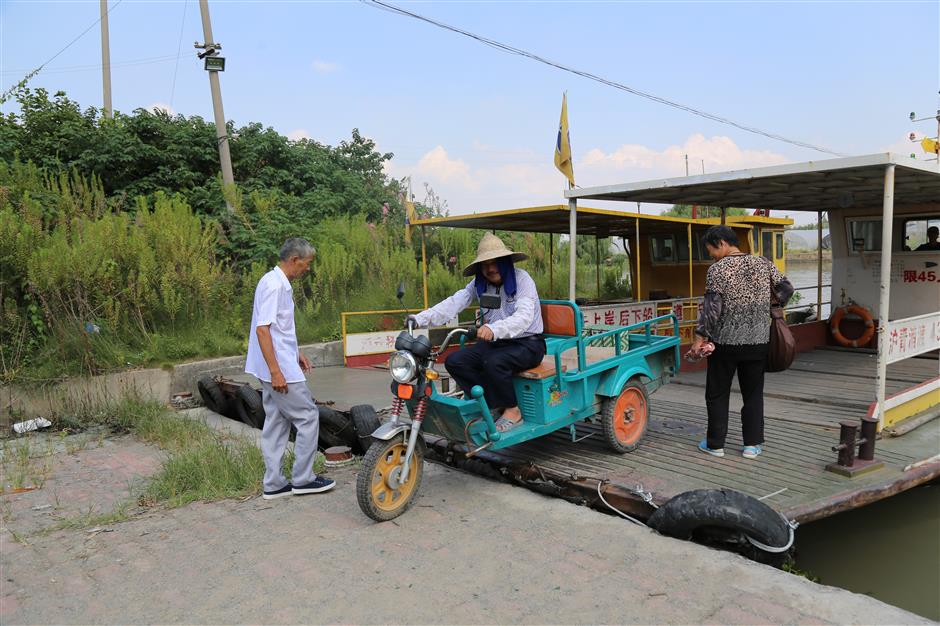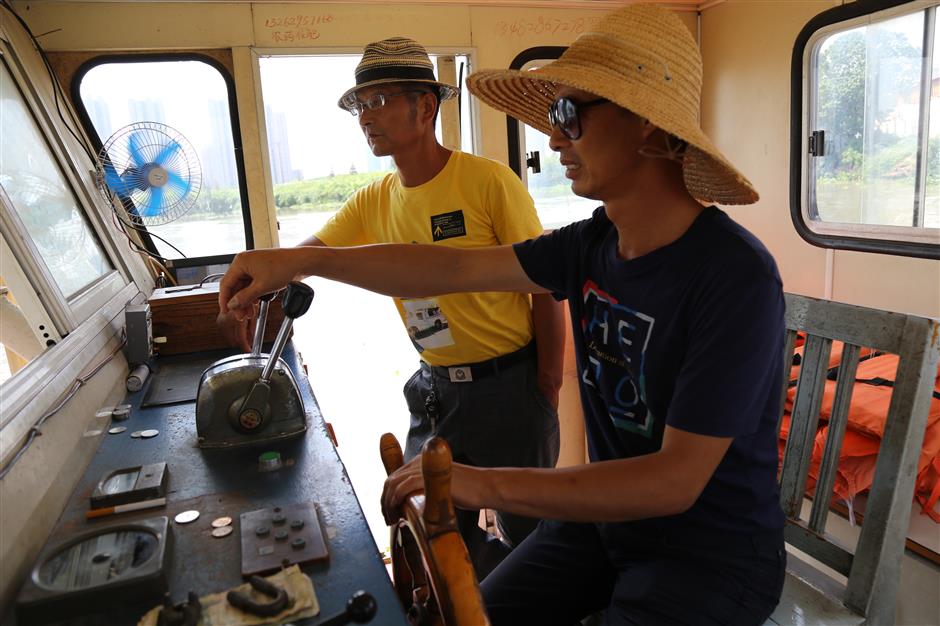Wusong River's last ferry port — here today, may be gone tomorrow

Two Qingpu villagers living in the south bank of Wusong River take the ferry to the north bank to sell vegetables.
If villagers in Qingpu have their way, Shanghai’s last ferry port on the Wusong River will be shut down for safety concerns and replaced by a bridge.
But while they want a faster transport system, many of them cherish the memories of a slower lifestyle and would like to see the port area preserved.
Wanshi Ferry Port, in the historic Baihe Town, operates one of the few remaining ferries that once dominated transport crossing the river.
A new bridge has been planned on the downstream, about 1.5 kilometers away from the ferry port, to make it more convenient for villagers of Wanshi Village, Wang Chunhua, an official with Baihe Township government, told Shanghai Daily yesterday.
Wanshi, which literally means “ten-thousand lions,” has been the place to cross the 100-meter-wide section of Wusong River for decades. Wooden rowing vessels used to take the villagers across but they were replaced by two modern ferry boats in 2007 after the town government rebuilt Wanshi port.
Wanshi is one of the only two villages in the town situated on the north bank of the river. Over 500 villagers need to cross the river to the south bank to go to work, school or hospital. The other ferry port for the neighboring Xinjiang village was closed in 2015.
The ferry service costs 2 yuan (31 US cents) for a one-way trip, but fewer and fewer people are using it, many preferring to use the two bus lines that offer more convenient links to the South bank and elsewhere in Qingpu District.

Villagers use the ferry at Wanshi Port. It costs 2 yuan for a one-way trip and 3 yuan for bikes and motorcycles.
A public poll is to be held among the villagers to decide whether to close the port, said Jiang Youliang, director with the safety management affairs center under the township government.
Fewer than 50 villagers take the ferries each day, according to the center. In its heyday, villagers had to wait in a long queue to be ferried to the other side of the river, Jiang said.
“Safety is the major concern, especially during rainstorms and typhoons,” Jiang said.
Moreover, though there are fewer cargo ships sailing along the waterway, collisions are still likely to happen between the ferries and cargo ships loading up, he added.
“I do cherish my childhood memory to take the ferries to cross the river every day, but safety is my top concern now,” Jiang told Shanghai Daily.
The town government and the center would fully solicit opinions on the villagers and the port staff ahead of any final decision, he added.

Ferry staff Chen Xiangming (left) and Xu Fudi.
Chen Xiangming, who is 55, began serving villagers at the port in 2000. He initially operated an old-style rowing vessel but now steers boats with a diesel engine. He works from 5am to 8pm with his colleague Xu Fudi, 60. Because of the falling numbers of passengers, the village subsidizes their wages.
Though Chen has fewer passengers, he is the man in the know. Any “big news” happening in the village, such as someone buying a motorcycle or celebrating a newborn grandson, and he is one of the first to hear.
“Most passengers have become my old friends who would share their stories with me during the short ferry trip,” he said.
“I support the decision of the government no matter whether the port will be gone in future,” Chen said. “But most of my passengers hope the service can be kept because they have become accustomed to the traditional cross-river method.”
But if the service is finally to be ended, the township government will consider exhibiting the port and the two ferries as a memory for the villagers, Jiang said.

Villagers chat with the ferrymen at an office in the ferry port. The office is named the "sitting room of the Wanshi village" by villagers.
Shanghai currently has about 18 ferry routes along the Huangpu River and several between the mainland and Changxing and Chongming islands.
However, with the rapid development of the Metro system, fewer people are taking the ferries. Rather than being a means of transport, some ferry lines on the Huangpu are today valued for the sightseeing opportunities they offer.















